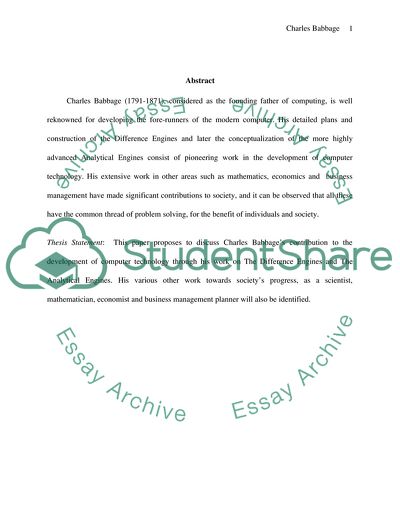Cite this document
(Charles Babbage and His Lifetime Essay Example | Topics and Well Written Essays - 1750 words, n.d.)
Charles Babbage and His Lifetime Essay Example | Topics and Well Written Essays - 1750 words. https://studentshare.org/social-science/1714285-charles-babbage
Charles Babbage and His Lifetime Essay Example | Topics and Well Written Essays - 1750 words. https://studentshare.org/social-science/1714285-charles-babbage
(Charles Babbage and His Lifetime Essay Example | Topics and Well Written Essays - 1750 Words)
Charles Babbage and His Lifetime Essay Example | Topics and Well Written Essays - 1750 Words. https://studentshare.org/social-science/1714285-charles-babbage.
Charles Babbage and His Lifetime Essay Example | Topics and Well Written Essays - 1750 Words. https://studentshare.org/social-science/1714285-charles-babbage.
“Charles Babbage and His Lifetime Essay Example | Topics and Well Written Essays - 1750 Words”. https://studentshare.org/social-science/1714285-charles-babbage.


